Mera Peak Climbing
Perched like a crown jewel amidst the Himalayas, Mera Peak beckons adventurers with its towering presence and promises of unparalleled vistas.
The journey to its summit is not merely a test of physical strength but a symphony of nature’s grandeur and human determination.
As climbers navigate the rugged terrain and icy slopes, they are met with a challenge that transcends mere conquest.
Intrigued by the allure of this majestic peak, one can only wonder about the tales of courage and resilience waiting to unfold on its snowy slopes.
Key Points
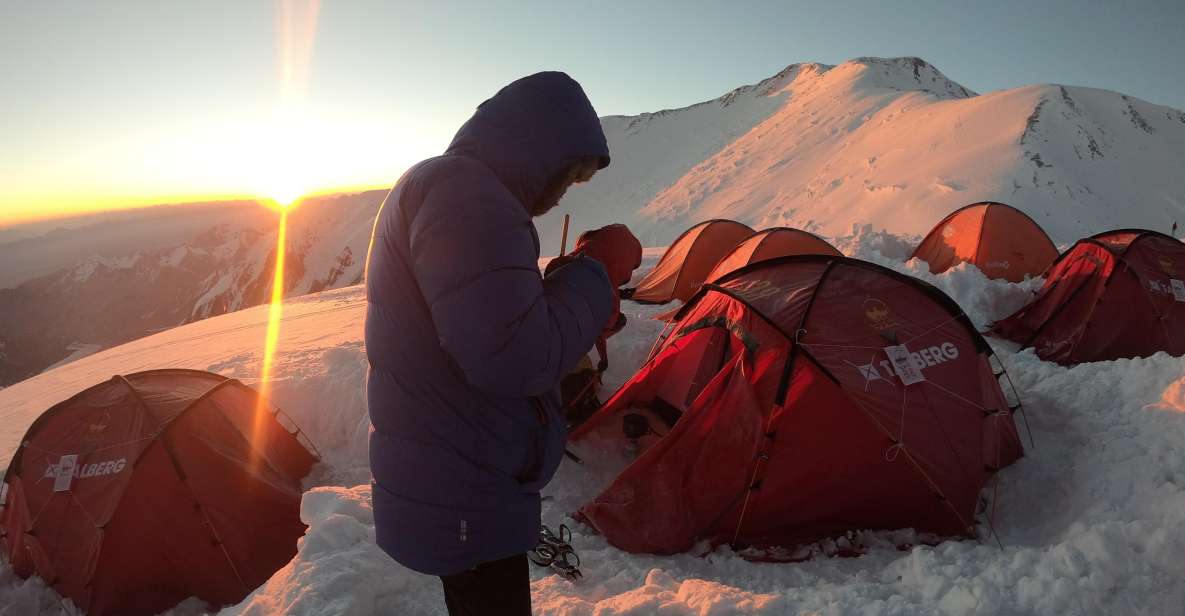
- Mera Peak is a 6476-meter snow-capped mountain in Nepal.
- Offers stunning views of Everest, Lhotse, Makalu, and Cho Oyu.
- Best climbing seasons are pre-monsoon (spring) and post-monsoon (autumn).
- Requires physical fitness and preparation for high-altitude challenges.
Booking and Logistics

When planning a Mera Peak climbing adventure, travelers benefit from flexible booking and logistics options that cater to various preferences and needs.
Packing essentials like warm clothing, sturdy hiking boots, and a reliable backpack are crucial for this high-altitude trek. Weather conditions play a vital role in the success of the climb, with the best seasons being pre-monsoon (spring) and post-monsoon (autumn) for optimal climbing conditions.
It’s essential to be prepared for fluctuating temperatures and potential snowfall, requiring adequate gear such as waterproof jackets, gloves, and hats.
Booking accommodations and permits in advance is recommended to ensure a smooth experience, along with climbing with licensed agencies and experienced guides for safety and guidance throughout the expedition.
Experience and Itinerary
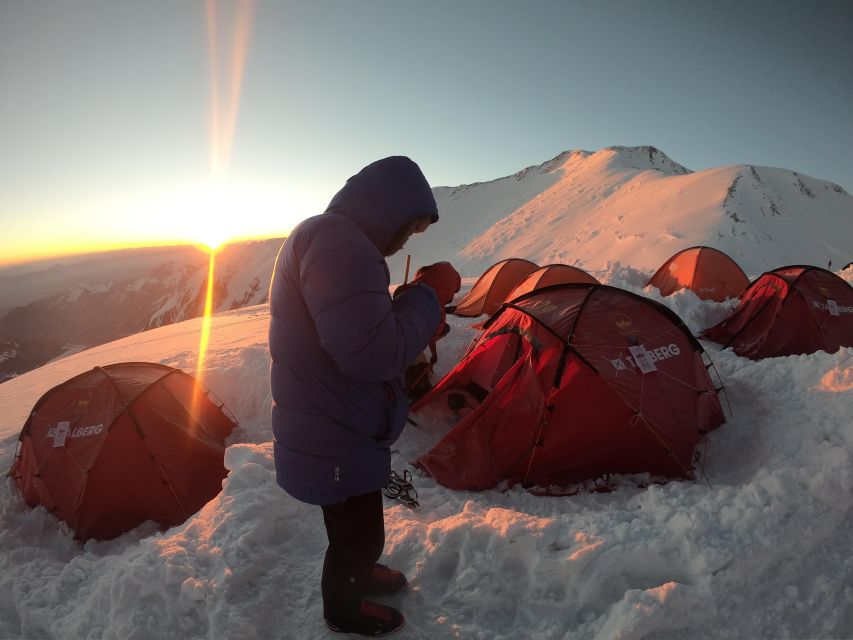
For those embarking on the Mera Peak climbing adventure, the experience and itinerary promise a thrilling journey through Sherpa villages, offering a unique blend of guided tours, sightseeing, and outdoor activities.
Travelers can enjoy the local cuisine and culture while passing through these charming villages and catching glimpses of Yaks along the way.
The main highlight of the itinerary is reaching Mera Peak in the Sagarmatha Zone, providing a sense of accomplishment and panoramic views of the surrounding Himalayan peaks.
This expedition not only challenges climbers physically but also offers a chance to connect with the rich cultural heritage of the region, making it a truly unforgettable experience for those seeking adventure and culture.
Highlights of Mera Peak
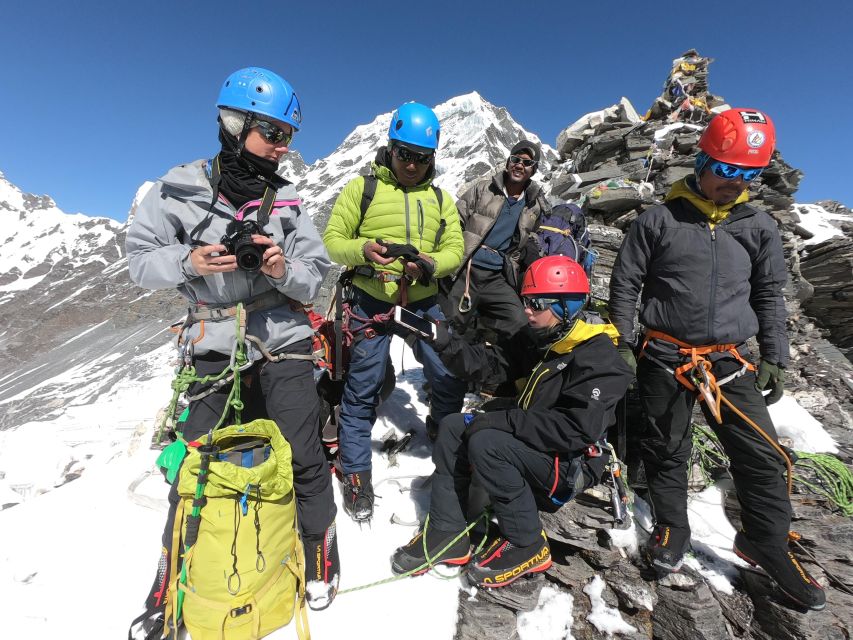
Nestled within the breathtaking landscapes of Sagarmatha National Park in Nepal, Mera Peak stands majestically at 6476 meters, offering climbers unparalleled views of Everest, Lhotse, Makalu, and Cho Oyu.
- Panoramic Views: The summit provides a 360-degree spectacle of some of the world’s highest peaks.
- Photography Opportunities: Capture sunrise and sunset moments against the backdrop of the Himalayas.
- Sense of Achievement: Reaching the summit rewards climbers with a feeling of accomplishment.
- Unique Experience: Climbing Mera Peak provides a blend of adventure and natural beauty.
- Memorable Encounters: Interact with local Sherpa communities and experience their way of life.
These highlights make Mera Peak a must-climb destination for adventurers seeking both challenge and breathtaking scenery.
Inclusions
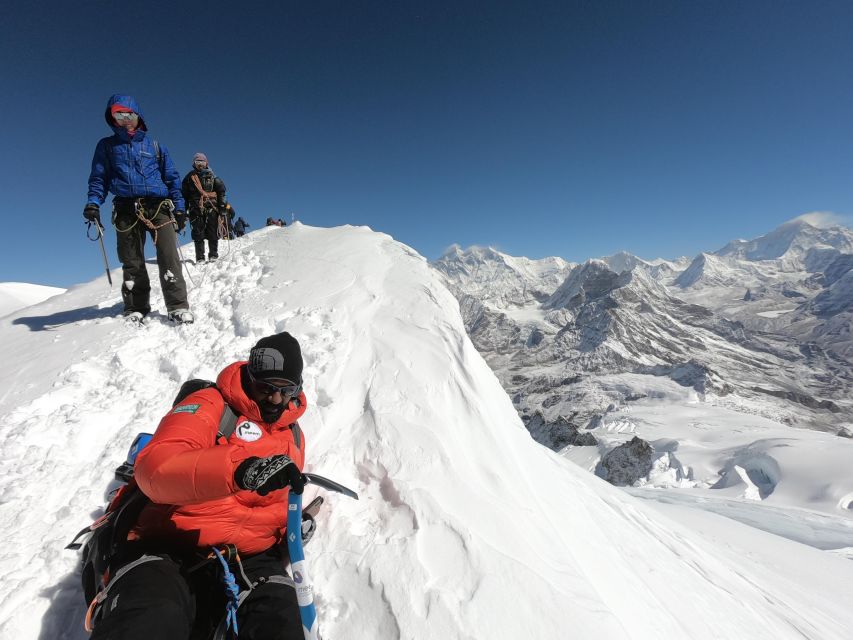
Climbers embarking on the Mera Peak expedition can expect a comprehensive package of inclusions designed to enhance their experience and ensure a successful ascent. Meal arrangements are included throughout the journey, providing climbers with nourishing food to fuel their adventure.
Plus, the package covers opportunities for local culture exploration, allowing participants to enjoy the rich traditions of the Sherpa villages they encounter along the way. These inclusions not only simplify the logistics of the climb but also add depth to the overall experience, offering a well-rounded adventure that combines the thrill of summiting Mera Peak with the chance to connect with the unique heritage of the region.
Optional Stops and Drop-off Locations
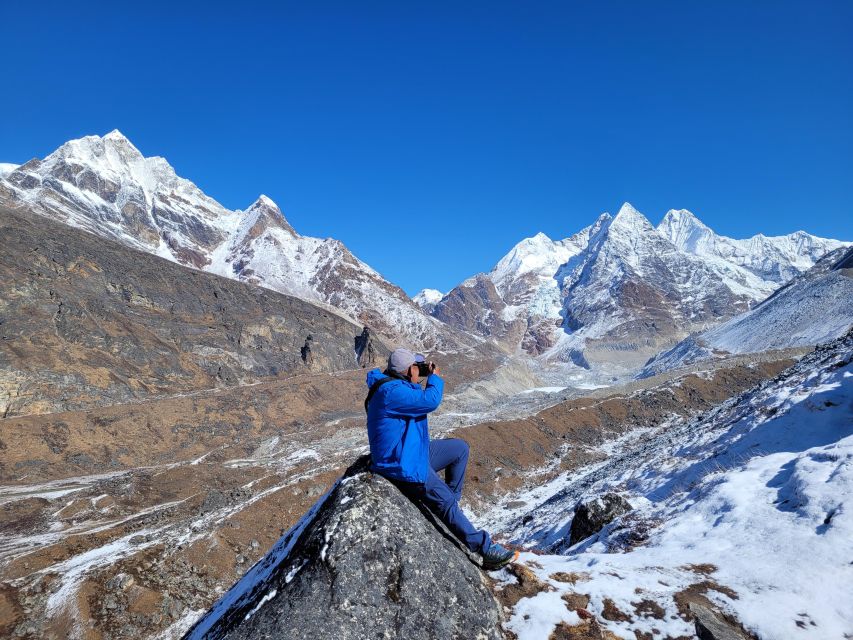
Visitors on the Mera Peak expedition can choose from a variety of optional stops and drop-off locations to further customize their journey through the breathtaking landscapes of Nepal. Exploring these options allows for a deeper immersion into the local culture and a taste of the delicious local cuisine.
Here are some recommended stops:
- Sherpa Villages: Experience the unique lifestyle of the Sherpa people and learn about their traditions.
- Local Markets: Dive into bustling local markets to witness daily life and sample authentic Nepalese dishes.
- Buddhist Monasteries: Explore the spiritual side of Nepal by visiting ancient monasteries along the way.
- Teahouse Interactions: Engage with locals at traditional teahouses for a firsthand cultural exchange.
- Scenic Viewpoints: Take in panoramic views of the Himalayas to truly appreciate the beauty of the region.
Climbing Seasons and Physical Fitness
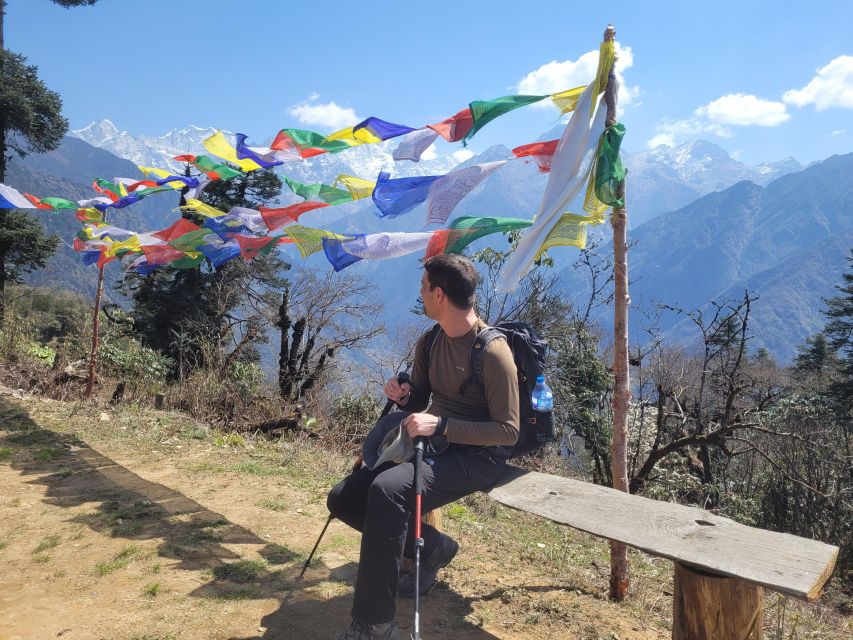
Exploring the best times to conquer Mera Peak and understanding the physical demands required for the ascent is crucial for a successful and safe climbing experience. Mera Peak, standing at 6476 meters in Sagarmatha National Park, Nepal, offers breathtaking views of Everest, Lhotse, Makalu, and Cho Oyu.
The best climbing seasons are in pre-monsoon (spring) and post-monsoon (autumn) for favorable weather conditions. Adequate physical fitness is essential due to the high-altitude challenges posed by the climb. Altitude acclimatization is key to a successful ascent, helping climbers adjust to the decreasing oxygen levels.
When preparing for the climb, selecting the best routes and ensuring proper physical conditioning will enhance the overall climbing experience.
Necessary Equipment and Permits
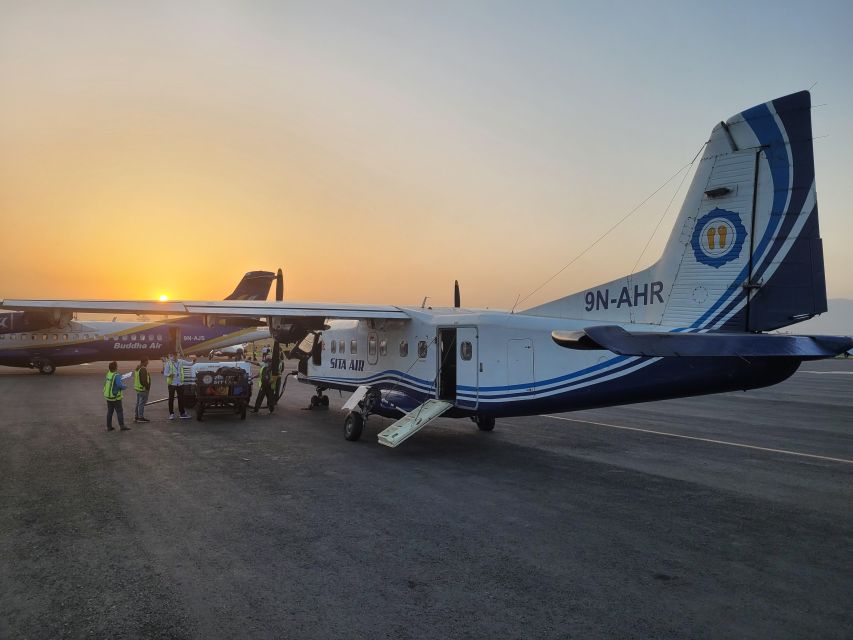
When embarking on a journey to conquer Mera Peak, ensuring you have the necessary equipment and permits is paramount for a safe and successful climbing expedition. Here are some vital aspects to consider:
-
Gear essentials
-
Properly insulated clothing for cold temperatures.
-
Climbing boots suitable for crampons.
-
Harness, ropes, carabiners, and helmet.
-
Ice axe and crampons for glacier travel.
-
Sleeping bag rated for sub-zero temperatures.
-
Permit regulations
-
Obtain a climbing permit from the Nepal Mountaineering Association.
-
Have the necessary Sagarmatha National Park entry permit.
-
Comply with local regulations and guidelines during the ascent.
-
Ensure all permits are valid for the entire duration of the expedition.
-
Keep permits accessible for inspection when required.
Summit Day and Panoramic Views
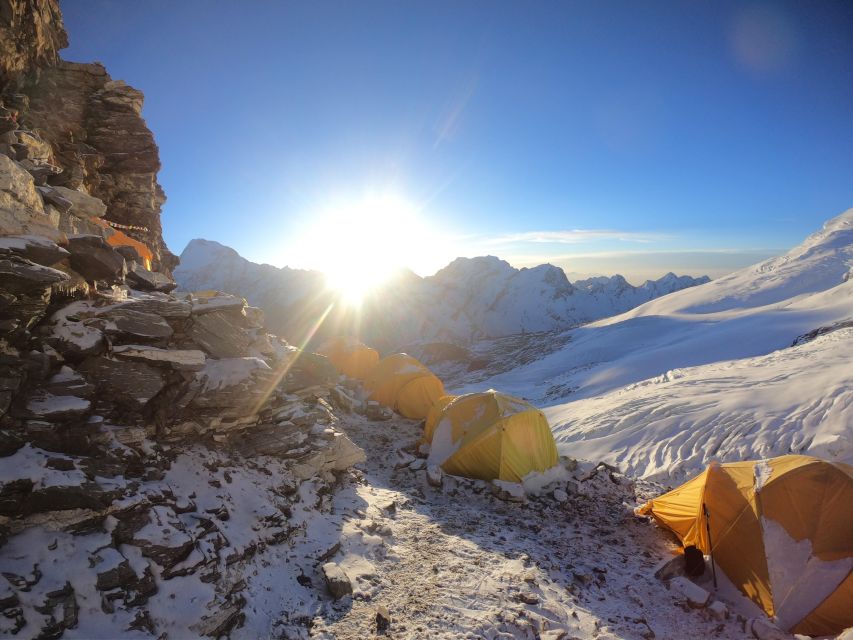
To culminate the Mera Peak climbing expedition, the exhilarating Summit Day rewards climbers with awe-inspiring panoramic views of the majestic Himalayan peaks.
Early mornings bring a sense of anticipation as climbers prepare to witness the breathtaking landscapes stretching out before them.
As the sun rises, illuminating the snow-capped peaks of Everest, Lhotse, Makalu, and Cho Oyu, the effort of the journey fades in comparison to the beauty surrounding them.
The crisp mountain air and the sense of accomplishment fill the climbers with a mix of exhaustion and euphoria.
This moment, standing at the summit of Mera Peak, encapsulates the essence of high-altitude adventure and offers a profound connection to the natural world.
Common questions
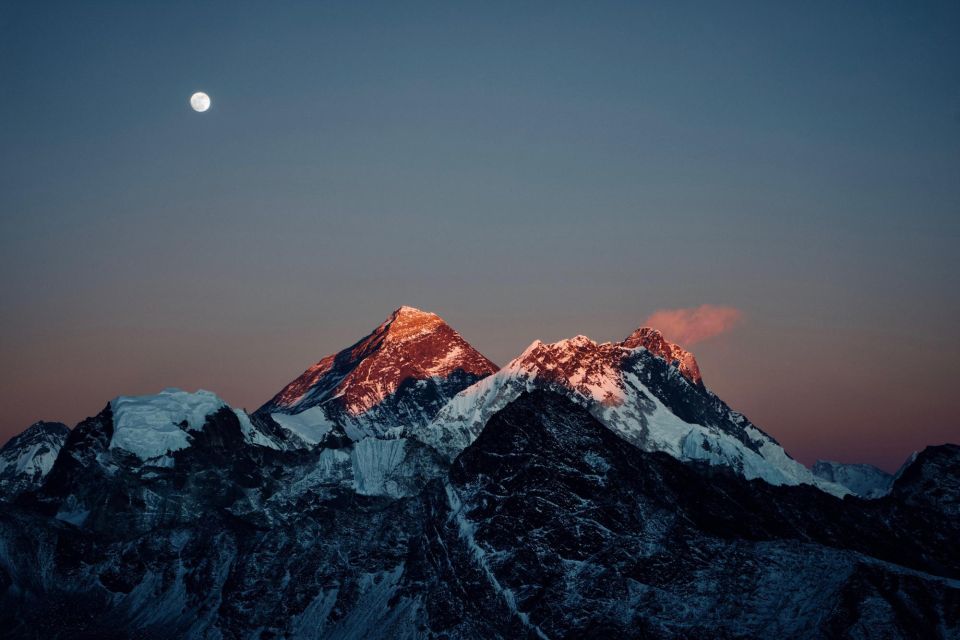
What Kind of Wildlife Can Be Encountered During the Climb to Mera Peak?
Wildlife encounters during the climb to Mera Peak offer opportunities for observing diverse flora and fauna. Conservation efforts in the region aim to protect natural habitats. Visitors can spot yaks, various bird species, and unique mountain vegetation.
Are There Any Cultural Experiences or Interactions With Local Communities Included in the Climbing Expedition?
Local customs and cultural exchange are integral parts of the climbing expedition. Travelers immerse in the community, experiencing traditions firsthand. Engaging with locals offers insights into their way of life, fostering mutual understanding and enriching the journey.
How Do Climbers Acclimatize to the High Altitudes During the Trek and Climb?
Climbers acclimatize to high altitudes during the trek and climb by gradually ascending, allowing their bodies to adjust to lower oxygen levels. Altitude training and proper high altitude gear aid in the acclimatization process for a safer climb.
Are There Any Emergency Evacuation Procedures in Place in Case of Altitude Sickness or Other Health Issues?
In case of altitude sickness, emergency evacuation procedures are in place. Helicopter rescues are common for severe cases. Immediate descent, supplemental oxygen, and medical assistance are crucial. Travelers should be aware of symptoms and alert guides promptly.
What Is the Policy Regarding Refunds or Rescheduling if the Climbing Expedition Is Affected by Unforeseen Circumstances Like Bad Weather or Natural Disasters?
In case of unforeseen circumstances like bad weather or natural disasters impacting the climbing expedition, clients can expect a flexible refund process or rescheduling options. This ensures peace of mind and adaptability to changing conditions.
Last Words
Embark on the ultimate adventure of a lifetime with Mera Peak climbing. From the stunning views of Everest and surrounding peaks to the meticulous planning and expert guidance provided, this expedition promises an unforgettable experience for all thrill-seekers and nature enthusiasts.
With careful logistics, essential equipment, and physical fitness, conquering Mera Peak is a challenge worth taking on. So gear up, prepare for the journey ahead, and get ready to summit one of Nepal’s most iconic peaks.